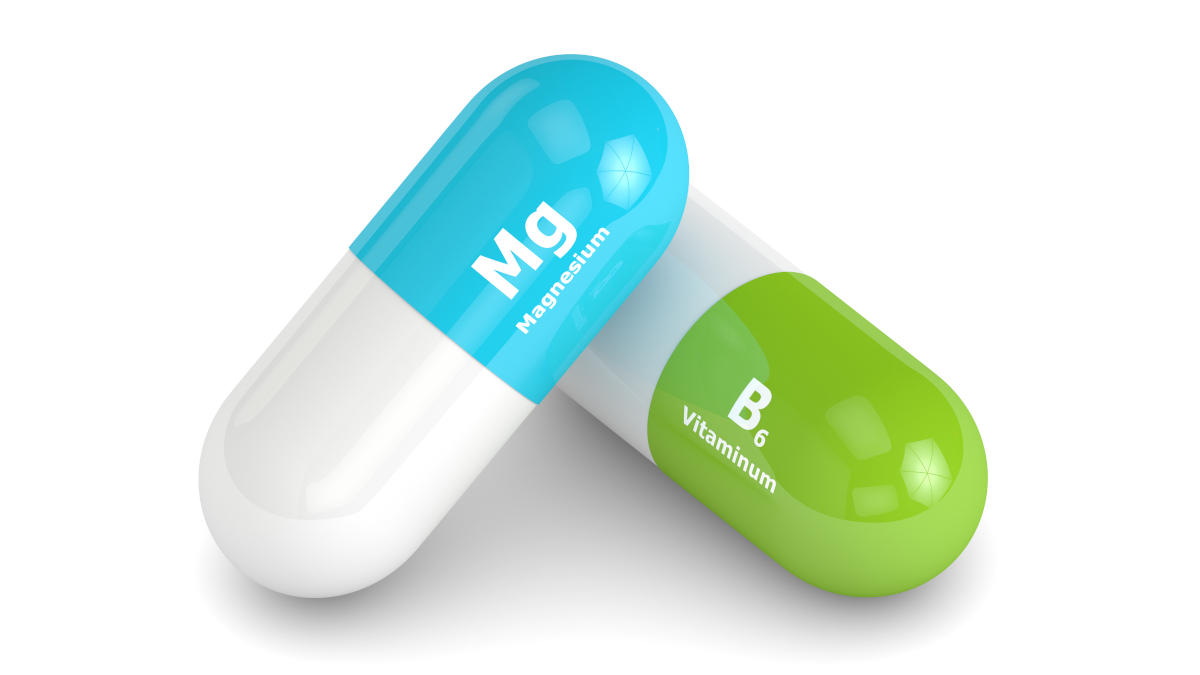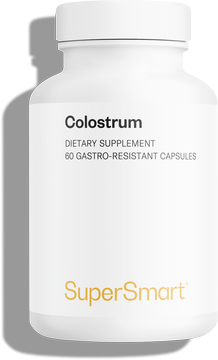Why is it best to combine vitamin B6 with magnesium?
When it comes to the trace-element magnesium and vitamin B6, there’s strength in unity. Discover why you should combine the two.

Magnesium: an essential mineral
A co-factor in more than 300 enzymatic reactions, including the synthesis of carbohydrates, fats, nucleic acids and proteins, magnesium is a mineral that’s essential in order for many organs to function properly, in particular, the cardiovascular and neuromuscular systems.
Magnesium (1-3):
- helps reduce fatigue;
- plays a role in nervous system function;
- supports healthy psychological function (and thus helps reduce anxiety) and immune system function;
- supports optimal muscle function (including heart muscle);
The European Food Safety Agency (EFSA) has therefore judged an adequate intake of magnesium for an adult male to be 350mg/day and for an adult female 300mg/day . For children, these amounts range from 170mg/day to 300mg/day depending on age (4).
Yet:
- the body loses a lot of magnesium through perspiration: magnesium deficiency is therefore common in sportspeople and during periods of hot weather;
- the body’s ability to store magnesium declines with age;
- alcohol consumption reduces the ability to absorb magnesium through the digestive system;
- certain diseases and drugs impair absorption of magnesium.
As a result, some studies suggest that around 70% of the population is lacking in magnesium, due to too little seafood, oilseeds and whole grains in the diet.
This is because magnesium is classed as an essential mineral: it cannot be produced by the body and must be provided by the diet.
Vitamin B6: an essential, water-soluble vitamin
A water-soluble vitamin, vitamin B6 (or pyridoxine) plays an important role in human health (5-7). It is involved in:
- energy metabolism;
- normal nervous system function ;
- formation of red blood cells;
- regulation of hormone activity;
- fatigue reduction;
- normal psychological function;
The EFSA has therefore set recommended amounts for vitamin B6 at 0.3mg/day for babies aged 7-11 months, between 0.6mg/day and 1.4mg/day for children aged 1-14 years, 1.7mg/day for males over 15 as well as nursing mothers, 1.6mg/day for females over 15 and 1.8mg/day for pregnant women (8).
However, vitamin B6 is neither produced nor stored by the body: a water-soluble vitamin, it is excreted in urine. That’s why it’s important to obtain a daily intake from the diet.
Generally speaking, the dietary sources of vitamin B6 are the same as those of magnesium, perhaps the first indication that they are meant to go together.
Magnesium–vitamin B6 synergy for maximum benefits
Indeed, it’s no coincidence that pyridoxine and magnesium are found in the same foods and are often combined in dietary supplements.
In fact, several studies have examined the synergistic effects of magnesium and vitamin B6.
Thus:
- it’s been shown that daily administration of large doses of vitamin B6 leads to an increase in erythrocyte magnesium, ie, that contained in cells. Furthermore, this high dosepromotes magnesium absorption in the gut (9);
- another study demonstrated the added value of the magnesium-B6 synergy for those experiencing significant stress (10).
- a number of scientists have studied the synergy between magnesium and B6 in relation to reducing the severity of premenstrual syndrome (11).
- some studies have even looked at this synergy’s potential for improving neuro-behavioural disorders in autistic children (12).
Vitamin B6 and magnesium offer the same benefits, are present in the same foods and the first boosts the effects of the second: that’s why you should take them together.
The most important thing is to choose a good quality magnesium-B6 combination in which the magnesium and vitamin B6 are really bioavailable. In this respect, opt for the most bioavailable form of magnesium: magnesium orotate (or the less expensive alternative magnesium malate). In terms of vitamin B6, if you want to benefit from all the B vitamins at once, you can take a complex which combines all the B vitamins in coenzymated forms.
References
- FARYADI, Qais. The magnificent effect of magnesium to human health: a critical review. International Journal of Applied, 2012, vol. 2, no 3, p. 118-126.
- SHECHTER, Michael. Magnesium and cardiovascular system. Magnesium research, 2010, vol. 23, no 2, p. 60-72.
- NECHIFOR, Mihai. Magnesium in major depression. Magnesium research, 2009, vol. 22, no 3, p. 163-166.
- https://www.efsa.europa.eu/fr/press/news/150728
- MALOUF, Reem et EVANS, John Grimley. Vitamin B6 for cognition. Cochrane Database of Systematic Reviews, 2003, no 4.
- LEKLEM, James E., et al.Vitamin B6. Handbook of vitamins, 2001, vol. 3, p. 339-396.
- RAIL, Laura C. et MEYDANI, Simin Nikbin. Vitamin B6 and immune competence. Nutrition reviews, 1993, vol. 51, no 8, p. 217-225.
- https://www.efsa.europa.eu/fr/press/news/160624
- EISINGER, J. et DAGORN, J. Vitamin B6 and magnesium. Magnesium, 1986, vol. 5, no 1, p. 27-32.
Keywords
2 Days
Great customer service - responsive …
I ordered from them and my item was unavailable for sometime. I was super happy when they reactivated my order and shipped my item which arrived very quickly. Great customer service.
Ruth Rueter
3 Days
Super fast shipping
Super fast shipping
Donald Borling
6 Days
Reputable companysearch and the number of…
The research and the number of selection of products.
NAKHJAVAN Shervin
19 Days
The Anti Aromatase is a great product
The Anti Aromatase is a great product. You just need to have constant inventory. Recently this product has been out of stock.
GEORGE Verne
21 Days
Great help on chat
Great help on chat. Knowledgeable and friendly.
Jason Argos
24 Days
Customer service was fast and friendly.
Customer service helped to stop the transaction process of the subscription. I appreciated that.
Greenie
24 Days
I order here due to the high quality of…
I order here due to the high quality of the products and the quick delivery of items - thank you
Barbara J
26 Days
SuperSmart's Eye Pressure supplements: highly recommended!
I purchase SuperSmart's Eye Pressure supplements regularly for over 5 years, and gotta say they are truly a wonderful product for my Glaucoma. Highly recommended if you have eye pain from your Glaucoma.
D. Martinez
30 Days
Quick service
Quick service
MONELL
31 Days
Speedy service.
Speedy service.
ROSENTHAL Marvin
35 Days
Clear website- Efficient
Clear website. Excellent search engine and fast delivery!
Mohamad Hussein
37 Days
They have great products.
They have great products.
Vickie
37 Days
Great Shipping Time!
You Have A Great Shipping Time! Praise The Lord!
DMHoge
39 Days
Doctor Recommended!
Good pricing, very good availability, doctor recommended (couldn't find what I needed anywhere else), and it took only a week to arrive (which I can't complain about).
Al
40 Days
Great product and fast shipping
Great product and fast shipping
Marie





